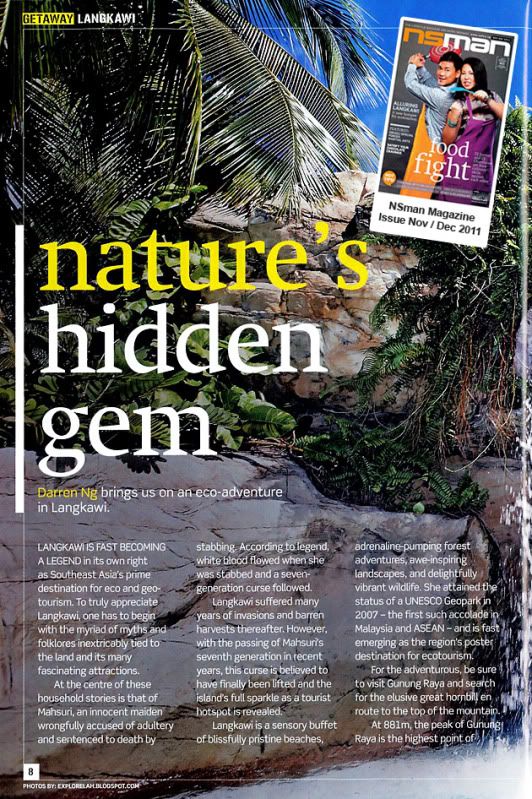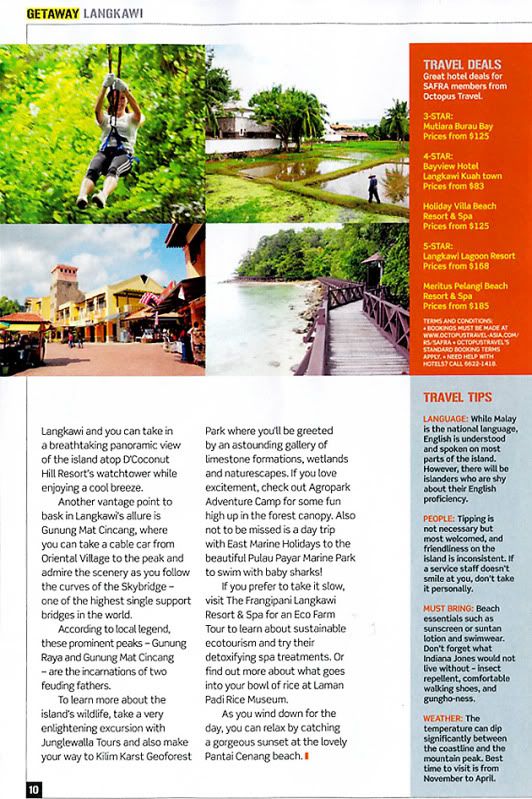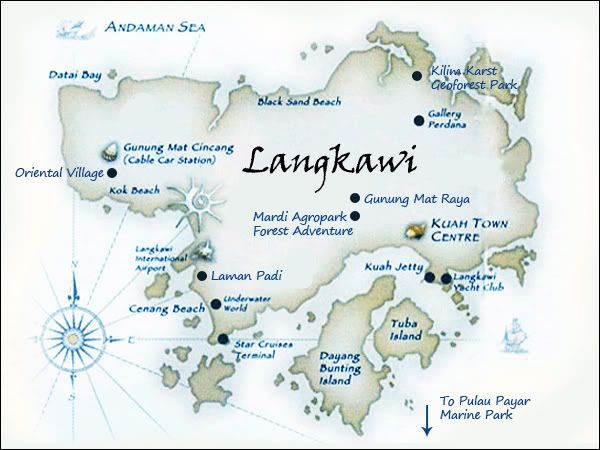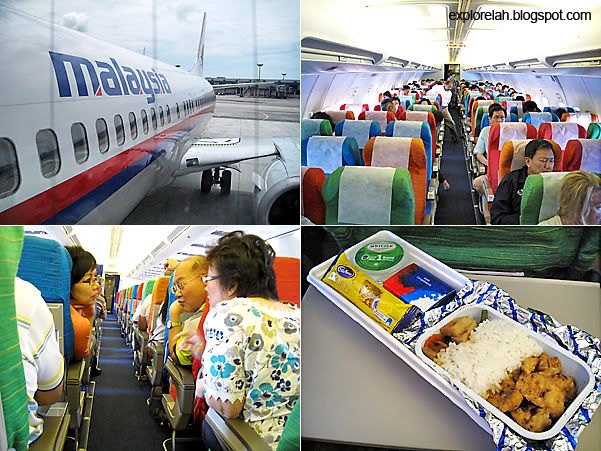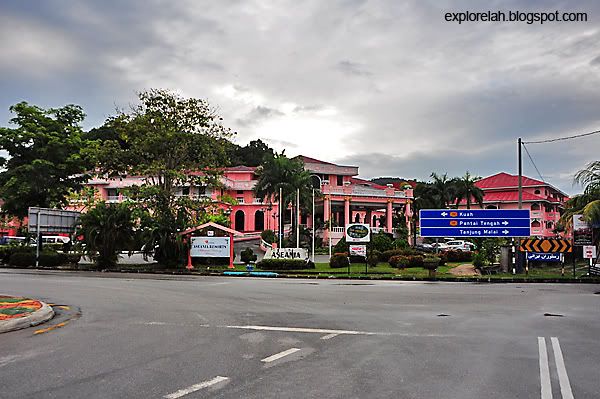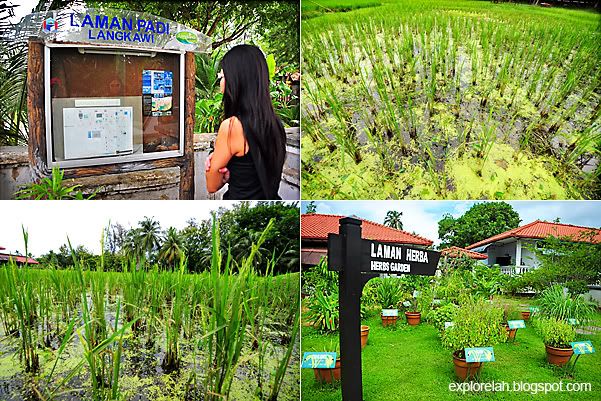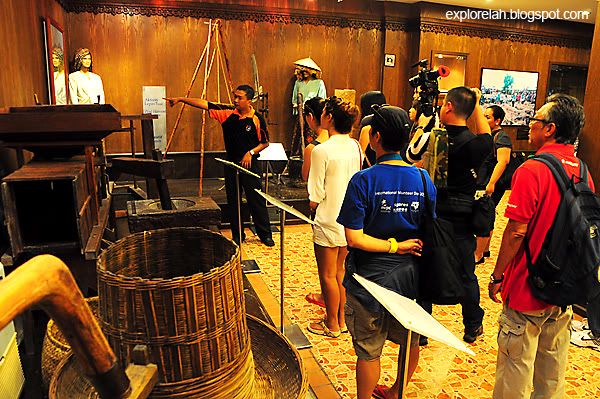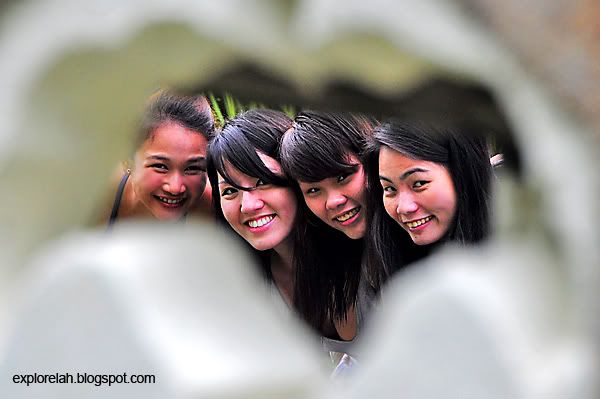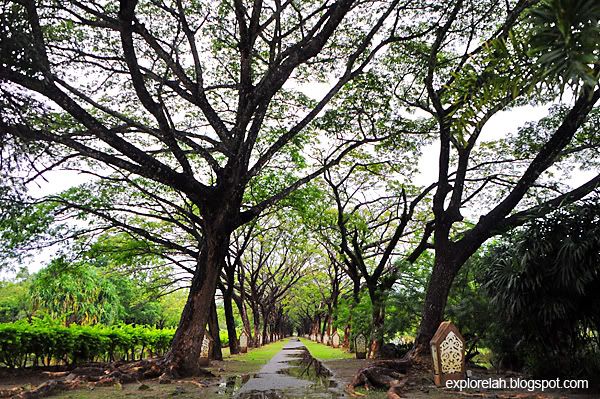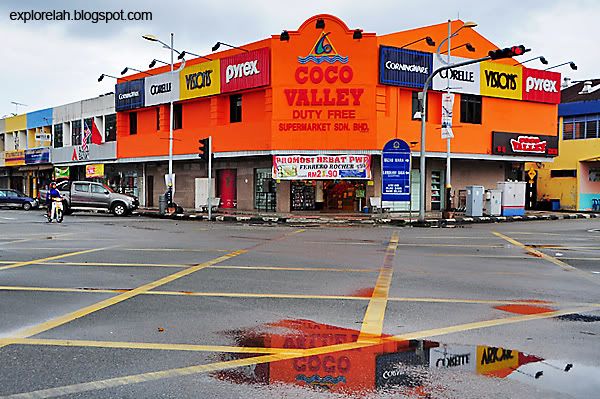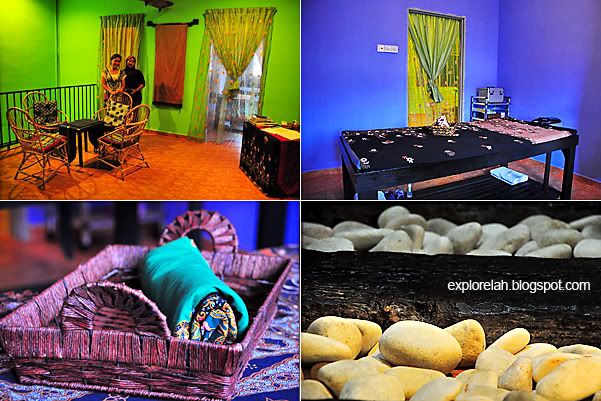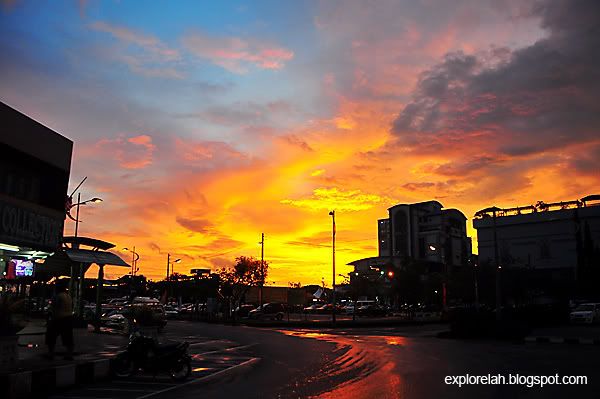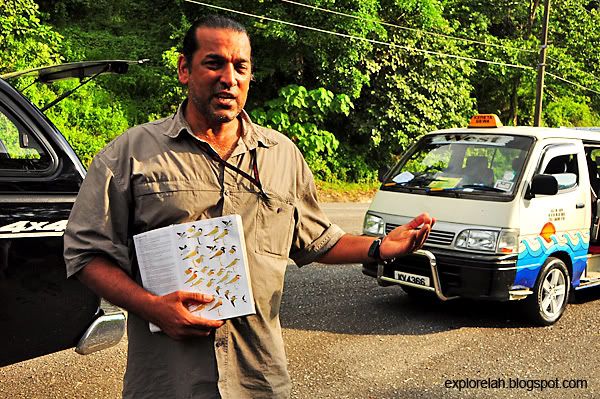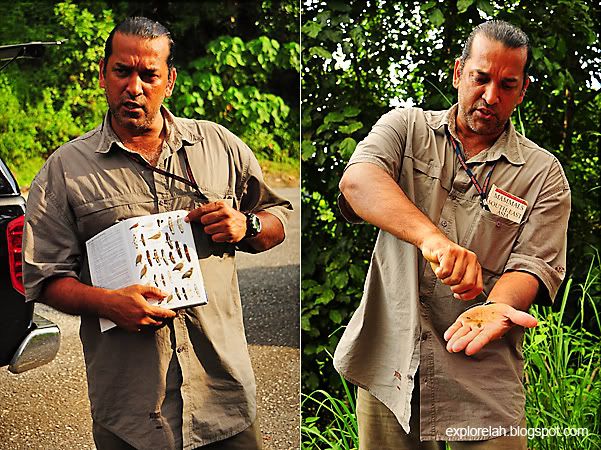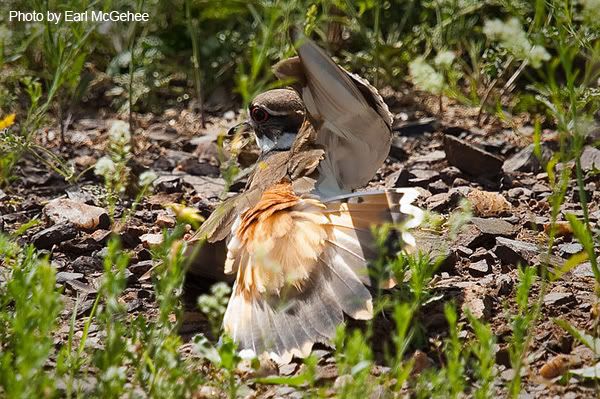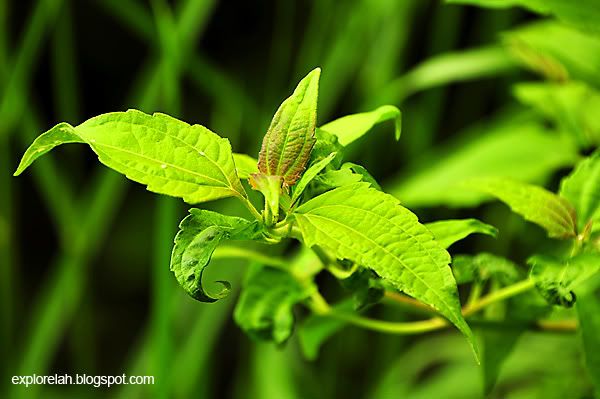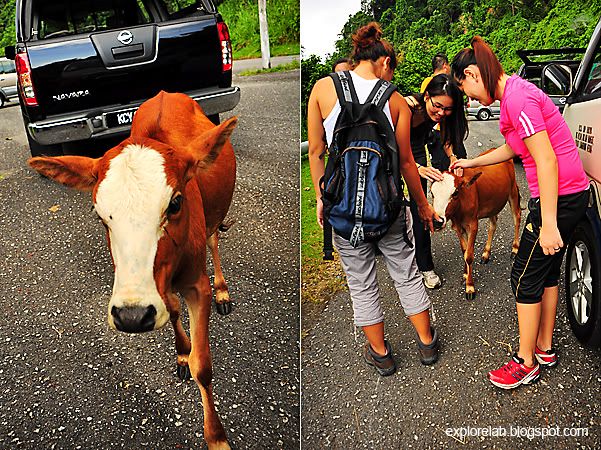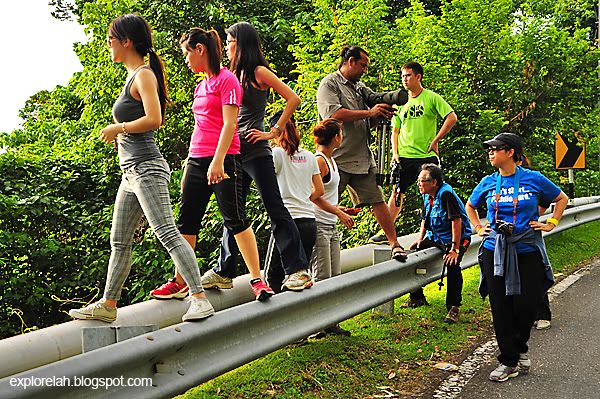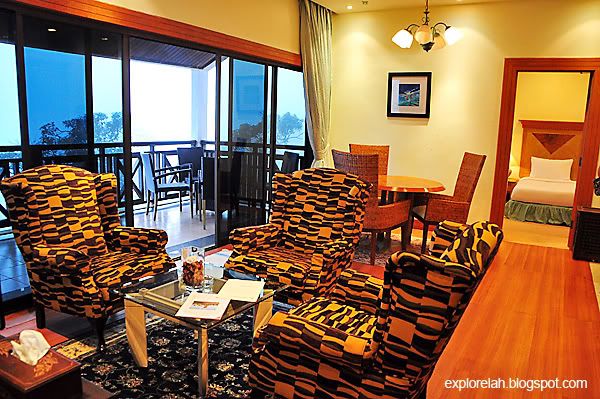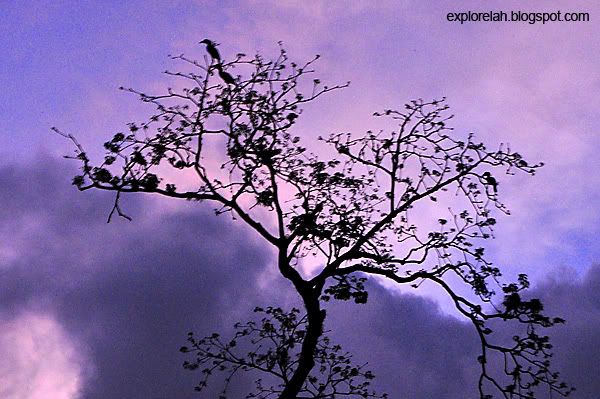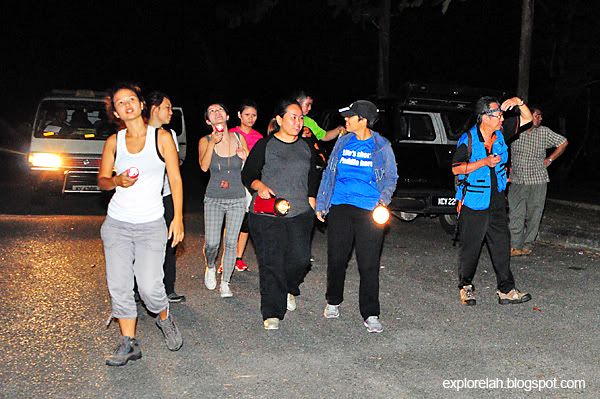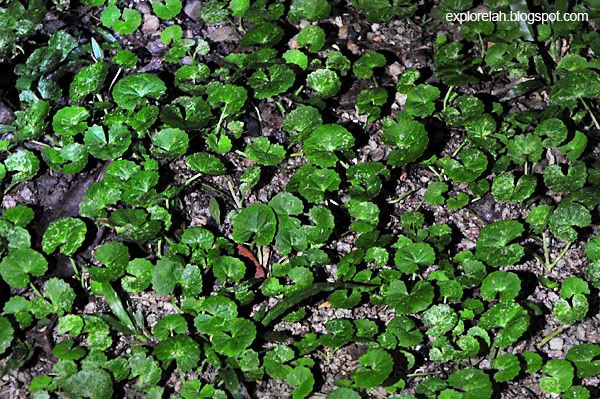When I received a copy of the NSman magazine in my mail last night, I didn't expect to see my feature story about Langkawi published in it! Felt so excited yet strange at the same time to see my name in print.
This is my very first travel article in a magazine. Woohoo! Hope you'll enjoy it!
The original title of this piece was "dECOrate Your Senses" but it was changed by the editor. Had wanted to express the variety that Langkawi offers to make for a colourful, beautiful experience on the different senses that flourishes within an abundance of eco-centricity. That's why "ECO" was hidden within "decorate".
Langkawi is already known as the Jewel of Kedah, so I didn't want to repeat the jewel/gem approach. But the new title is more direct and easier to understand than having to decipher the meaning behind my original title.
I think the new title summed up my original intent really well and it's gentler on the senses because comprehension of the meaning was made more digestible. Many thanks to the editor!
But I still preferred my original title although it's harder to appreciate. Just like some places we go to where bliss is not imediately apparent. I think Langkawi is somewhat like that. For people who prefer metropolitan settings, this island may take some getting used to. But for nature buffs, Langkawi is truly a gem!
Showing posts with label Langkawi. Show all posts
Showing posts with label Langkawi. Show all posts
03 November 2011
02 October 2011
Langkawi - Pantai Cenang & Kuah Town
With its feet firmly planted in the Andaman Sea and rolling back across acres of luminous jade green fields embraced by a mountainous arc, Langkawi is without any doubt, naturally well-endowed. And it's not hard to see why. Langkawi's rich natural heritage owes itself to the island's geological history dating back some 500 million years!
Considered to be the birthplace of the Malaysian archipelago, one might expect this resort destination to be all rural and primal in order to conserve its natural beauty. That's not really the case. The island is pretty built up with a pronounced effort in merging urban developments and environmental sustainbility through eco-consciousness. Of the developed areas, Pantai Cenang and Kuah Town are where most of the island's urbanisation efforts are clustered. And in this post, let me take you on a cyber tour to some of the attractions in these 2 districts.
Getting to Langkawi from Singapore
Let's start this last post of my Langkawi exploration at the beginning... getting there. The day of the departure was the first time I met up with all the bloggers and coordinators for the trip. Thankfully, they were such a lively and affable bunch, we skipped the awkwardness of being strangers and went straight into being buddies.
Our carrier was Malaysia Airlines (MAS). First time flying with MAS and I just adore those colourful seats. Feels like a party rather than the standard sombre and uniformly coloured seats that most airlines use.
Perhaps airlines should come with thematic decors like those boutique hotels that have a different theme to spice things up for passengers! Going to an island destination? Step into an underwater or safari themed cabin. Flying during Halloween month? Get spooked by plush spiders lurking in the overhead lugguage cabinet and freaky meals. But of course, that would mean increased budget at a time where budget airlines are siphoning off passengers.
While Langkawi is developed, don't expect an ultra modern metropolis with a wide offering of well-connected public transport system. There is no MRT, no trains, and I don't recall seeing buses or a bus-stop.
The best way to get around the island is to rent a vehicle (car, minivan, or bike) for self-drive or book chauffeured transportation. There are quite a number of rental companies offering their services near the baggage collection area.
I didn't check out the prices but I got a pricelist from Aseania Hotel and rates range from RM40 (hourly) - RM350 (daily) depending on the kind of vehicle and whether it is high season or low season. Our trip coincided with the rainy low season. The difference between low and high season is a RM50 - RM80 surcharge.
Pantai Cenang
Also spelt Pantai Chenang, it is a stretch of public beach popular with the locals and tourists just 10 minutes drive from the airport. Along the beach is a street lined with hotels, shops, spas and restaurants that bustles at night. It's considered the most happening street on Langkawi.
Personally, I found the street to be rather boring with shabby-looking restaurants and uninteresting shops. But maybe because I didn't really spend time to browse the businesses there. Our trip coincided with Malaysia Day and the street was packed with people that night. There was an outdoor concert and fireworks!
Along Pantai Cenang, you can find Laman Padi Rice Museum and Underwater World, the two biggest attractions in the area other than the beach. I didn't have a chance to see Cenang beach but I read reviews on TripAdvisor that it is rather dirty.
A cleaner and quieter stretch of beach would be Pantai Tengah where you'll also find the greenest resort in all of Malaysia, The Frangipani Langkawi Resort & Spa (read review here).
Aseania Resort Review
If you're coming from the airport and going down Pantai Cenang street, you'll come to Aseania Resort which sits at a junction at the end of the street. Some of us spent a night here.
When I got into my room, I didn't feel like coming out again because of the long walk but I had to because there was only 3 channels on TV. All in Malay. So I got out to a nearby convenience store to get some beer and drink till I'm not bored.
The saving grace at Aseania was that the room is really huge and it has free wi-fi access compared to the other 2 hotels we stayed in where wi-fi access is available only at the lobby area.
Room rates range from RM175 - RM480 for a Superior Room to Suite / Apartment-type lodging arrangement per night. Prices include breakfast and differential charges between low-high season . At this price range, Aseania Resort makes for a good-value-for-money stay.
Laman Padi Rice Museum
Opening Hours : 10:00am - 6:00pm daily
Entrance Fees : RM2.00 (Adult), Free for Children below 12yo
If you are a rice queen or king like me who only know how to press 'On' on the rice cooker, a visit to Laman Padi may be an interesting excursion to learn more about how this Asian dietary staple gets to our table. Entry is free (I think) and it's located at Pantai Cenang so there's good reason to pay this museum a quick visit.
Legenda Park
Opening Hours : 8:00am - 11:00pm daily
Entrance Fees : Free
About a half-hour drive from Pantai Cenang is Langkawi's town centre - Kuah Town. One of the sights we visited briefly was the Legenda Park (a.k.a. Lagenda Park). Our visit lasted only about 15 minutes because the weather was threatening rain and an earlier downpour rendered the park grounds rather puddly.
Kuah Town
Kuah means 'gravy' in Malay and legend has it that this was the place where a pot of gravy was spilled when 2 giant fathers fought each other during their children's wedding. The 2 giants were Mat Machincang and Mat Raya. If you find the names familiar, that's because they are the names of the 2 most prolific mountains on Langkawi.
According to the folk tale, the 2 men were BFFs but got into a fight when the father of the bride saw his son-in-law ogling another woman during the wedding. During the scuffle, the pot of gravy was spilled which is now Kuah Town and the 2 men were turned into mountains.
To really appreciate Langkawi, it really helps to get acquainted with the island's many myths. The legends and folkores add another layer to the fabric of experience that sort of holds all the natural wonders found here all together.
In Singapore, a bar of that costs S$1.80 - S$2.20. Over at a duty-free shop called Zon at Underwater World (Pantai Cenang), triple packs of 3 Whittakers' Almond Gold went for RM16.90! That's 9 bars for S$7.00 or S$0.78 each!!! I heard the chocolates are even cheaper at the duty-free shops in Kuah Town. Since I came back from Langkawi 2 weeks ago, I've been snacking on chocs constantly. My pants are getting tighter :o(
Booze is also cheaper here too! A can of 330ml beer costs only around S$1! In some instances, it's cheaper than flavoured beverages!
Since I landed in Langkawi, I've been on the lookout for a spa to de-stress. But due to our hectic schedule, we never stayed at one place long enough for an hour's bodywork to be done. We had slightly over an hour in Kuah Town but I was torn between walking into one of the number of spas I saw there and taking photos of the town.
Working my fingers got the vote although there isn't really much to take pictures of here. then I came across 2 kids playing a familiar game and took their photos from afar. The girl saw me and they began to move. They were very shy. In an attempt to quell their uneasiness (and in the hope of taking more shots of them... heh heh... *scheming*), I walked over and showed them their photos. A lady walked over, whom I assumed to be the mother, and asked to see the shots too.
As it turned out, she runs a spa with her sister and handed me a flyer. Her name is Zara and I took it as a sign from God to ask me to rest! By then, I barely had an hour left so I tailored my therapy and asked for a 30 minutes foot reflexology (RM25) and 15 minutes head and back massage (RM20, original price is RM40 for 30 mintues).
So what do I think of the treatments I received and the service quality? I must say, I was pleasantly surprised. Maybe because I didn't expect much as previous experiences with small spas usually left much to be desired.
At Zara's, the ambience was comforting enough even though I'm accustomed to white or muted colours to be the de facto hues for calm and not the saturation of palettes here but somehow, when the lights were dimmed, the green, purple and orange worked. The two ladies were friendly and accomodated my requests and the treatment steps felt balanced and professional. Balance is very important because some therapists tend to work more on one side and less on the other or the steps were different and I'll be feeling something is amiss throughout the massage.
My only grouse was that Naza should give the treatments barefoot or with soft bedroom slippers. The slapping and dragging sounds of rubber slippers on tiles when she walked around was disconcerting for me while having the head and back massage done. While she did check with me on the pressure of her strokes, I was a little embarassed to tell her to go harder so I told her it was okay. They just started business and met a thick-skinned cow like me, I didn't want to tire her out. But yeah, she could add more strength. Then again, maybe it's just my preference.
my entry for the in2it.sg Langkawi blog contest, I said I wanted to come here for a wardrobe update because during my visit here in 1992, I was photographed wearing super obiang clothes. It's the early 90s and the shadow of the terrible 80s fashion sense still loomed. I'm allowed to make mistakes!
Almost 20 years later, I'm back in Langkawi. How time flies. I've become less disastrous in my choice of wardrobe (I hope!) and this time, I got to see more of the clothes Langkawi wears rather than fussing on my own. It has been a great trip and I can't thank my companions, Langkawi Development Authority (LADA) and Tourism Malaysia enough!
Considered to be the birthplace of the Malaysian archipelago, one might expect this resort destination to be all rural and primal in order to conserve its natural beauty. That's not really the case. The island is pretty built up with a pronounced effort in merging urban developments and environmental sustainbility through eco-consciousness. Of the developed areas, Pantai Cenang and Kuah Town are where most of the island's urbanisation efforts are clustered. And in this post, let me take you on a cyber tour to some of the attractions in these 2 districts.
Getting to Langkawi from Singapore
Let's start this last post of my Langkawi exploration at the beginning... getting there. The day of the departure was the first time I met up with all the bloggers and coordinators for the trip. Thankfully, they were such a lively and affable bunch, we skipped the awkwardness of being strangers and went straight into being buddies.
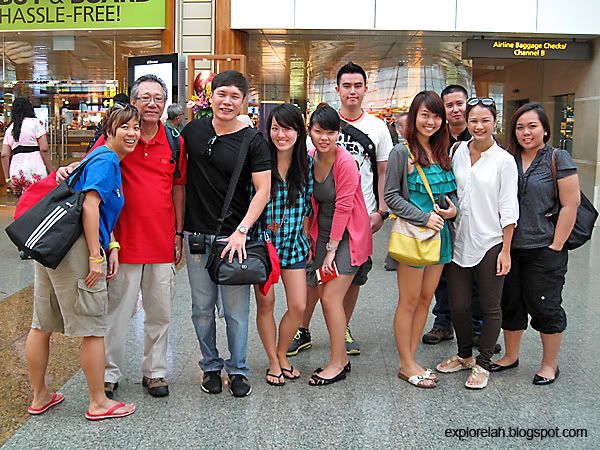 |
| Left to right : Eleanor (Ageless Online), Malcolm (MMVC Network), me with helmet hair, Stephanie, Germaine, Jonathan, Ivy, Shaun (in2it.sg), Joanne-Marie, and Hasni (SAFRA). |
Our carrier was Malaysia Airlines (MAS). First time flying with MAS and I just adore those colourful seats. Feels like a party rather than the standard sombre and uniformly coloured seats that most airlines use.
Perhaps airlines should come with thematic decors like those boutique hotels that have a different theme to spice things up for passengers! Going to an island destination? Step into an underwater or safari themed cabin. Flying during Halloween month? Get spooked by plush spiders lurking in the overhead lugguage cabinet and freaky meals. But of course, that would mean increased budget at a time where budget airlines are siphoning off passengers.
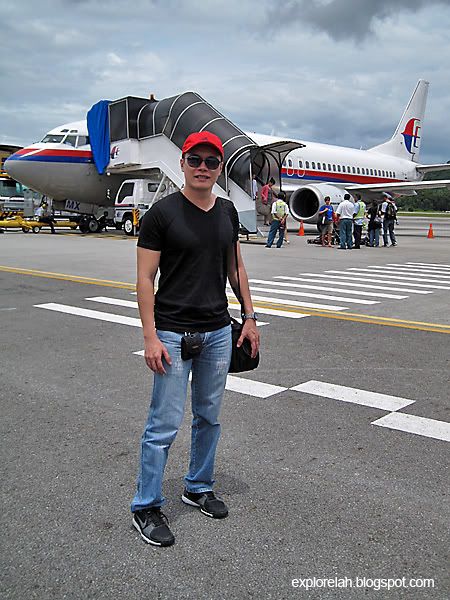 |
| Our departure flight was delayed for about 30 minutes. From accounts by friends who had flown MAS, tardiness is to be expected. |
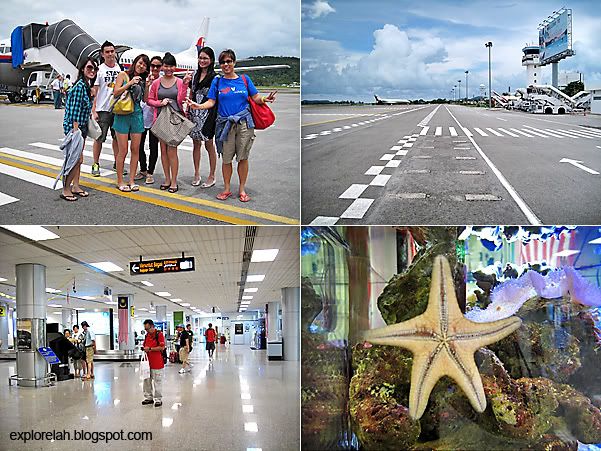 |
| Langkawi International Airport is small but clean and modern. So nice to be greeted by a starfish upon stepping into the airport. |
The best way to get around the island is to rent a vehicle (car, minivan, or bike) for self-drive or book chauffeured transportation. There are quite a number of rental companies offering their services near the baggage collection area.
I didn't check out the prices but I got a pricelist from Aseania Hotel and rates range from RM40 (hourly) - RM350 (daily) depending on the kind of vehicle and whether it is high season or low season. Our trip coincided with the rainy low season. The difference between low and high season is a RM50 - RM80 surcharge.
Pantai Cenang
Also spelt Pantai Chenang, it is a stretch of public beach popular with the locals and tourists just 10 minutes drive from the airport. Along the beach is a street lined with hotels, shops, spas and restaurants that bustles at night. It's considered the most happening street on Langkawi.
Personally, I found the street to be rather boring with shabby-looking restaurants and uninteresting shops. But maybe because I didn't really spend time to browse the businesses there. Our trip coincided with Malaysia Day and the street was packed with people that night. There was an outdoor concert and fireworks!
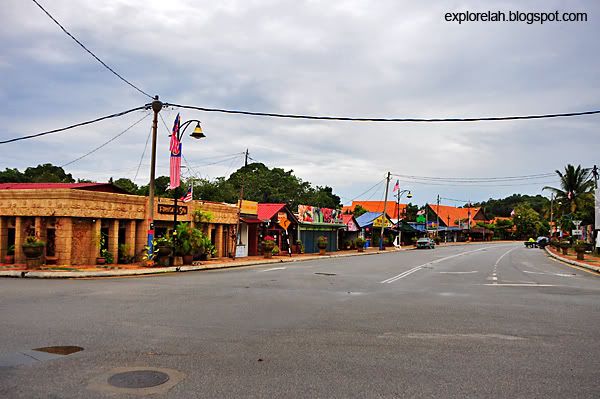 |
| Life at Langkawi moves at a leisurely pace. Its beachside developments are not as dizzying and chaotic as Phuket, but they lacked the artistry and polished appearance of Bali. |
A cleaner and quieter stretch of beach would be Pantai Tengah where you'll also find the greenest resort in all of Malaysia, The Frangipani Langkawi Resort & Spa (read review here).
Aseania Resort Review
If you're coming from the airport and going down Pantai Cenang street, you'll come to Aseania Resort which sits at a junction at the end of the street. Some of us spent a night here.
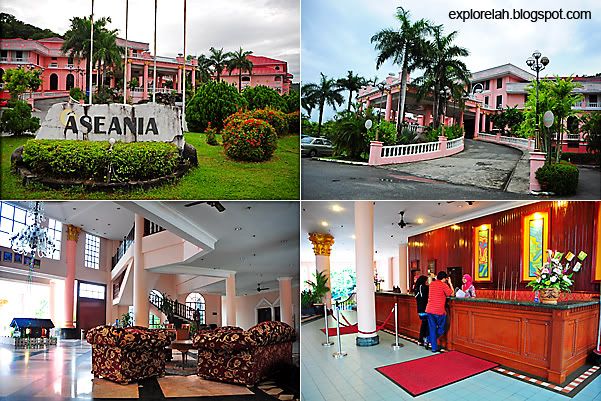 |
| The hotel is a sprawling development with a few accomodation wings. Decor here is a patchwork of aging chandeliers and cheap floor tiles. Expect generosity in space but not aesthetics. |
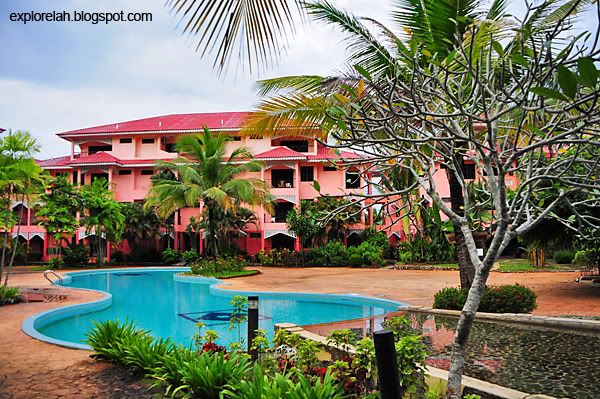 |
| What's rather nice at Aseania Resort is its abundance of water bodies with a 154.4m swimming pool making it into the records as the longest pool in Malaysia. |
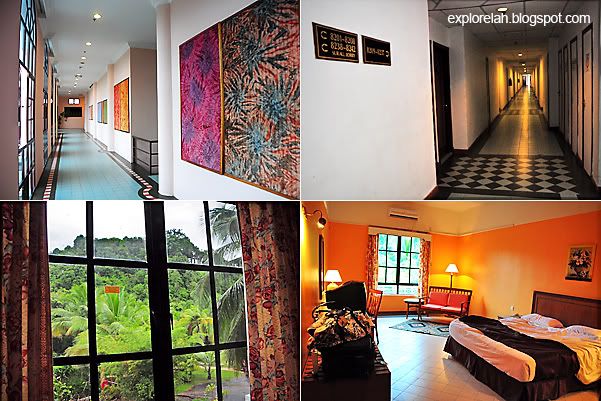 |
| To get to my room, I had to walk down two long hallways which showed just how big the hotel is. |
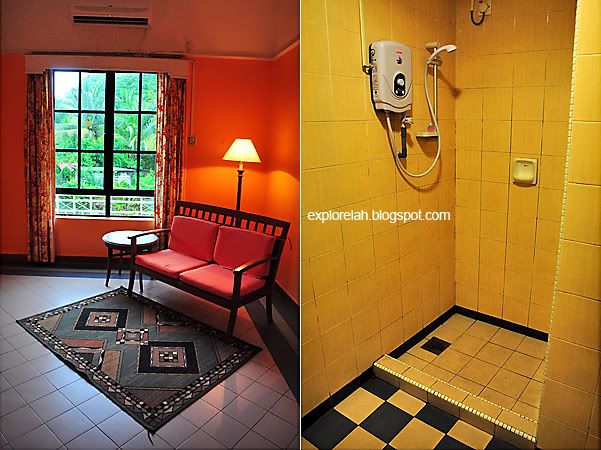 |
| Perhaps Aseania Resort is so big that its upkeep is a challenge. The hotel looked rather tired. |
Room rates range from RM175 - RM480 for a Superior Room to Suite / Apartment-type lodging arrangement per night. Prices include breakfast and differential charges between low-high season . At this price range, Aseania Resort makes for a good-value-for-money stay.
Laman Padi Rice Museum
Opening Hours : 10:00am - 6:00pm daily
Entrance Fees : RM2.00 (Adult), Free for Children below 12yo
If you are a rice queen or king like me who only know how to press 'On' on the rice cooker, a visit to Laman Padi may be an interesting excursion to learn more about how this Asian dietary staple gets to our table. Entry is free (I think) and it's located at Pantai Cenang so there's good reason to pay this museum a quick visit.
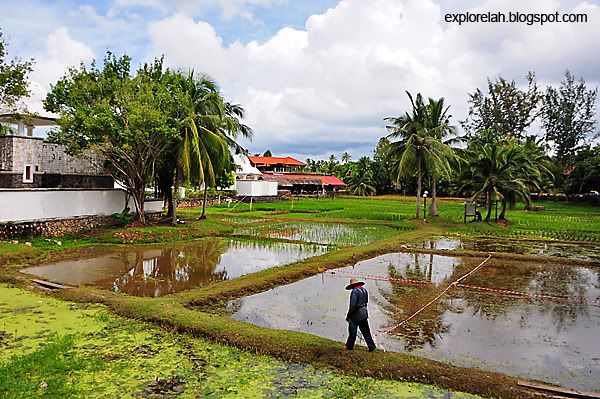 |
| Meaning 'Rice Garden', Laman Padi has an outdoor working padi field and an indoor exhibitory gallery. |
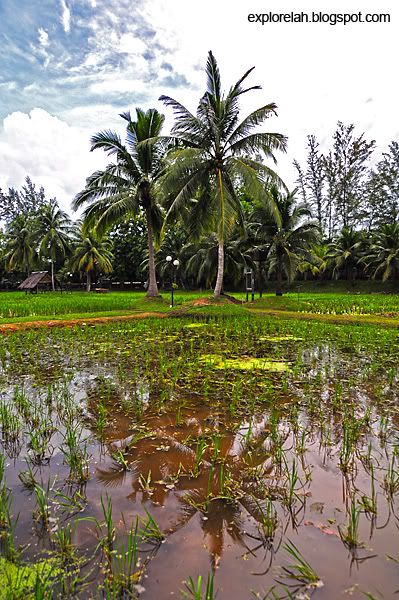 |
| Love the petri dish kampong-rustic setting. |
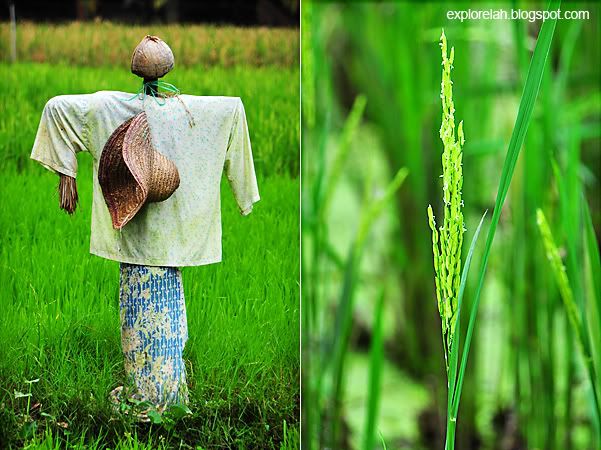 |
| This scarecrow looks kinda gum jek. Need more wheat to fatten up! |
 |
| The rice museum is simple but clean and well-maintained with a lot of ethnic flavour. |
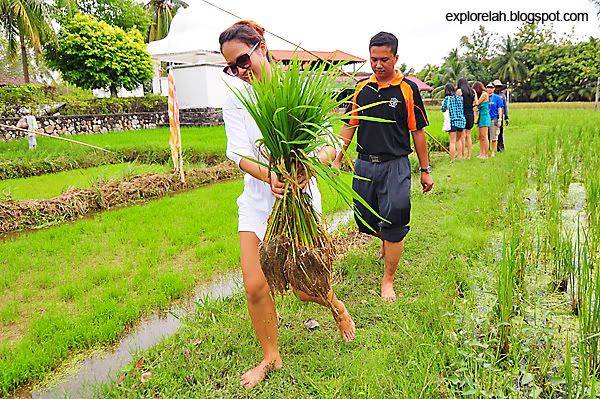 |
| We got to walk the field and get a first-hand taste of planting rice after the tour! Joanne made agriculture look so glam. |
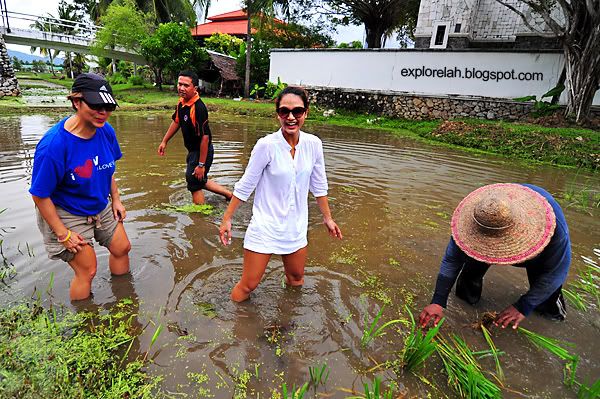 |
| It's hard work having fun! |
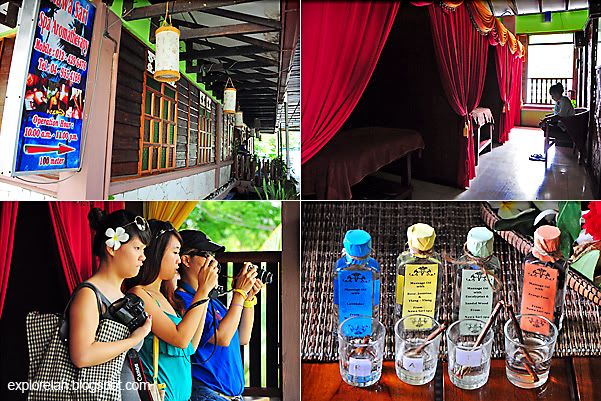 |
| After 'working' at the fields, drop by the adjourning Nawa Sari Spa for a massage with homemade therapeutic oils. Didn't get to try the treatments so no comments on the service and masseur's skills. |
Opening Hours : 8:00am - 11:00pm daily
Entrance Fees : Free
About a half-hour drive from Pantai Cenang is Langkawi's town centre - Kuah Town. One of the sights we visited briefly was the Legenda Park (a.k.a. Lagenda Park). Our visit lasted only about 15 minutes because the weather was threatening rain and an earlier downpour rendered the park grounds rather puddly.
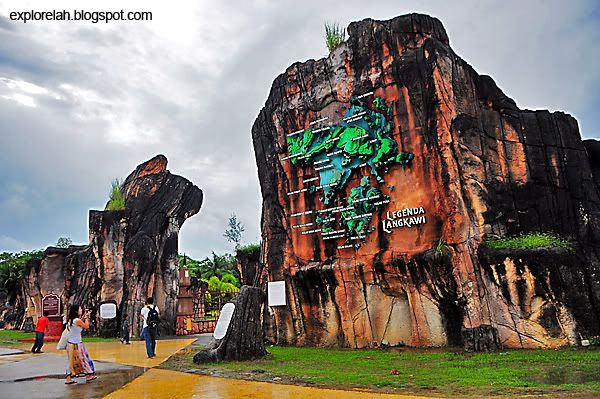 |
| Opened in 1996, Lagenda Park was closed in 2008 for renovations till 2010. The imposing rock entrance is impressive and looks like a miniature mountain. |
 |
| It's a pity we didn't get to see more of the park as I think it would be really beautiful. Legenda Park contains 17 story-monuments that tell the many myths and legends of Langkawi. |
Kuah Town
Kuah means 'gravy' in Malay and legend has it that this was the place where a pot of gravy was spilled when 2 giant fathers fought each other during their children's wedding. The 2 giants were Mat Machincang and Mat Raya. If you find the names familiar, that's because they are the names of the 2 most prolific mountains on Langkawi.
According to the folk tale, the 2 men were BFFs but got into a fight when the father of the bride saw his son-in-law ogling another woman during the wedding. During the scuffle, the pot of gravy was spilled which is now Kuah Town and the 2 men were turned into mountains.
To really appreciate Langkawi, it really helps to get acquainted with the island's many myths. The legends and folkores add another layer to the fabric of experience that sort of holds all the natural wonders found here all together.
In Singapore, a bar of that costs S$1.80 - S$2.20. Over at a duty-free shop called Zon at Underwater World (Pantai Cenang), triple packs of 3 Whittakers' Almond Gold went for RM16.90! That's 9 bars for S$7.00 or S$0.78 each!!! I heard the chocolates are even cheaper at the duty-free shops in Kuah Town. Since I came back from Langkawi 2 weeks ago, I've been snacking on chocs constantly. My pants are getting tighter :o(
Booze is also cheaper here too! A can of 330ml beer costs only around S$1! In some instances, it's cheaper than flavoured beverages!
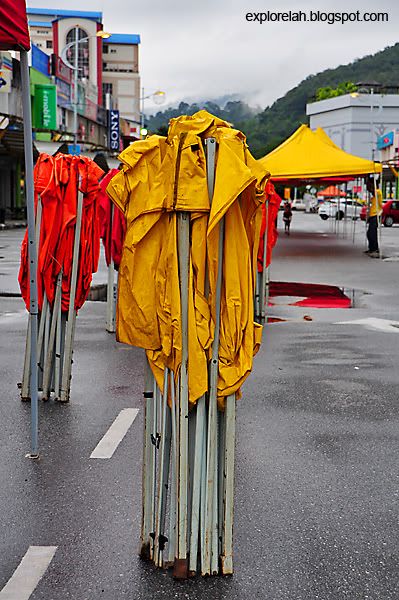 |
| Tenting up for a pasar malam. Not sure if there's a night market going on every Sunday in Kuah Town but I came across preparations for one during our visit. |
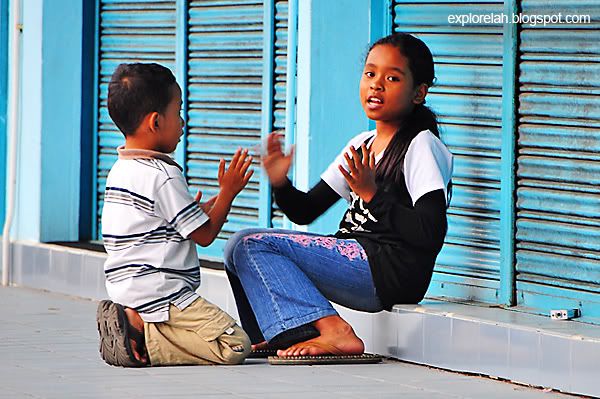 |
| Island kids playing a clapping game I used to play. Lost its name to age but watching them heated up nostalgia in me. |
Working my fingers got the vote although there isn't really much to take pictures of here. then I came across 2 kids playing a familiar game and took their photos from afar. The girl saw me and they began to move. They were very shy. In an attempt to quell their uneasiness (and in the hope of taking more shots of them... heh heh... *scheming*), I walked over and showed them their photos. A lady walked over, whom I assumed to be the mother, and asked to see the shots too.
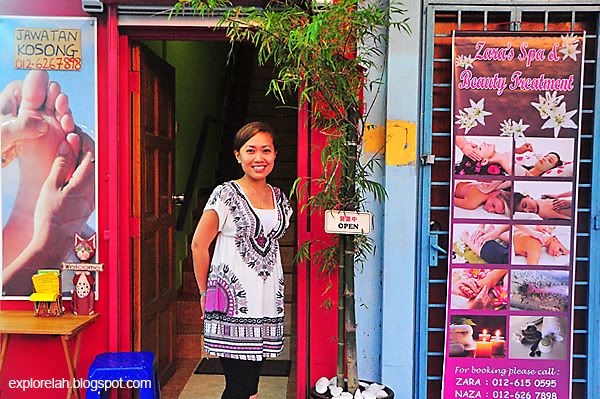 |
| The verygood-looking and friendly owner of Zara's Spa & Beauty Treatment. Address : No. 8, 1st Floor, Jalan Pandak Mayah 5, Pusat Bandar Kuah. Tel : 012-615 0595, 012-626 7898. |
 |
| This is my therapist, Naza. She's the sister of Zara and mother of the two kids I photographed. She must be wondering why this Singaporean has feet from Hong Kong. |
At Zara's, the ambience was comforting enough even though I'm accustomed to white or muted colours to be the de facto hues for calm and not the saturation of palettes here but somehow, when the lights were dimmed, the green, purple and orange worked. The two ladies were friendly and accomodated my requests and the treatment steps felt balanced and professional. Balance is very important because some therapists tend to work more on one side and less on the other or the steps were different and I'll be feeling something is amiss throughout the massage.
My only grouse was that Naza should give the treatments barefoot or with soft bedroom slippers. The slapping and dragging sounds of rubber slippers on tiles when she walked around was disconcerting for me while having the head and back massage done. While she did check with me on the pressure of her strokes, I was a little embarassed to tell her to go harder so I told her it was okay. They just started business and met a thick-skinned cow like me, I didn't want to tire her out. But yeah, she could add more strength. Then again, maybe it's just my preference.
my entry for the in2it.sg Langkawi blog contest, I said I wanted to come here for a wardrobe update because during my visit here in 1992, I was photographed wearing super obiang clothes. It's the early 90s and the shadow of the terrible 80s fashion sense still loomed. I'm allowed to make mistakes!
Almost 20 years later, I'm back in Langkawi. How time flies. I've become less disastrous in my choice of wardrobe (I hope!) and this time, I got to see more of the clothes Langkawi wears rather than fussing on my own. It has been a great trip and I can't thank my companions, Langkawi Development Authority (LADA) and Tourism Malaysia enough!
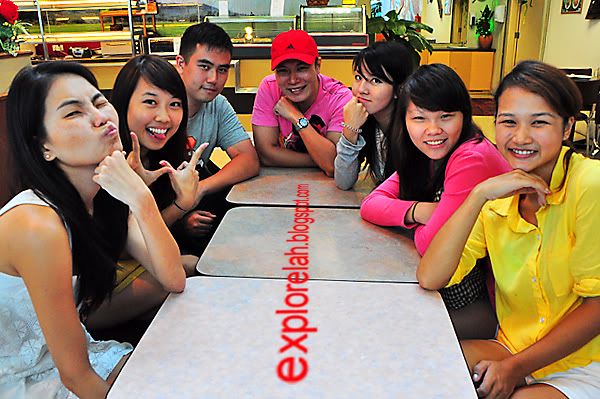 |
| It has been a fun time and may our journeys meet again someday! |
Labels:
Aseania Hotel,
Kuah Town,
Lagenda Park,
Laman Padi Rice Museum,
Langkawi,
Legenda Park,
Malaysia,
Pantai Cenang
29 September 2011
Langkawi - Gunung Raya with Irshad Mobarak
I think what defines a good holiday is one that changes you. Be it from a highly stressed state to a reclamation of peace, physical burn-out to a sense of rejuvenation, from boredom to excitement, from ignorance to enlightened...
Feeling refreshed and having loads of fun during a vacation is just fantastic.
But they are only temporal escapes.
In my opinion, a truly great and enduring holiday is one where we've also learnt something about the world we live in and come home with our horizons expanded. And a visit to Gunung Raya in the company of Langkawi's celebrity naturalist, Irshad Mobarak, is one of those rare occsions where learning and fun intersects.
And might I add, he's appeared in various documentaries by Nat Geo and Discovery Channel. We were so fortunate to have him personally take us on a field trip of the island's wildlife!
The plant can be found along our Singapore highways too! But don't go harvesting it for use just yet as roadside foliage contain higher levels of metal contamination from vehicular fumes. There is a love-hate relationship with this plant... loved for its medicinal and nutritional applications but loathed for its obnoxious virility in growth.
My envy of the view the eagles had was quickly satiated with our arrival on the roof of Langkawi. Standing at 881m, Gunung Raya is the tallest mountain and offers a superb panoramic view of the island.
Unfortunately, our visit met with thick fog and we could hardly see much. But the cooler temperature was a welcome from the tropical heat. I estimate that the drive up should take no more than 45 minutes without stops.
Can't really see them clearly but Irshad made up for it with a very touching story. The hornbills mate for life and form lifelong bonds and there was a pair that Irshad had gotten to know. One day, a gunshot rang through the forest and the female collapsed to the ground. A man in a motorcycle sped away with it.
For the next one and a half year, the remaining male hornbill would fly to the very branch on which its mate was killed and called out to it. The male hornbill had since found a new mate but occasionally, it can still be seen at that tree spot.
So, do you want your relationship to be a hornbill, or chicken?
Hunt for the Controversial Colugo
After Gunung Raya, Irshad took us on a night excursion of the forest. So exciting! I've never explored the forest at night before. Our main purpose here was to look for the elusive Colugo who, get this, is our genetic relative!
Did you spend a lot of time with the photo preceding the above one looking for what's hidden in the branches? You've been had. Haha. There's nothing in the photo except the foliage. I'm just kidding with you but also to show you how hard it was to spot anything on the leafy ceiling.
We shone our torchlights into the trees hoping to catch an eye shine (tapetum lucidum effect) which will indicate a Colugo (pray it's not Potianak!) but to my unaccustomed eye, I saw nothing. But on the ground, I caught sight of a huge cricket, I mean a really BIG one hurrying across the forest floor. And Irshad promptly picked it up told us their story...
There are two types of male crickets - the noisy ones and quiet ones. A quiet cricket? Now, that's something new.The noisy crickets get more girlfriends but lead very short lives as they attract predators and a parasitic fly that lays eggs into their bodies. When the eggs hatch, they burst from the cricket's abdomen Alien-style.
The quiet ones would hang around the noisy ones and wait. When the loudmouths get busy with a mate, they stop cricketing but their calls would've attracted other females to come their way. At this point, the quiet ones let out a small whimper. Thinking that its the male they were after, the females mate with the cheaters.
The quiet male cricket may not get an orgy, but it gets to live very long. So what do we learn from the male crickets? Promiscuity kills ya faster!
From his glowing account of the medicinal benefits of this herb, I wanted to just get down on all fours and start munching on them! The plant has a long history as a traditional medicine in the Chinese, Indonesian, Vietnamese, Thai and Ayurvedic systems of healing which modern science is beginning to verify. A drug for cardiovascular diseases made from the active constituents of the Indian Pennywort may soon find its way into our Western pharmacies soon.
According to clinical studies, the herb is a mild adaptogen which has the ability to regulate stress and act as a sort of tonic for general health like ginseng, has anti-microbial efficacies, possesses anxiolytic properties (mild tranquilising effects helpful in combating anxiety disorders), and also an aphrodisiac! Plus it can stimulate collagen production so it is a great ally for age-defying skin. That's a green fountain of youth right beneath my feet!
Our search for the Malayan Colugo (a.k.a. Sunda Flying Lemur) was futile. Irshad told us it's unusual not to catch them in action. Guess our lucky stars had fallen asleep that night. But I've found a photo to show you because this animal is pretty amazing.
Nicknamed the Flying Lemur of Southeast Asia, the misnomer is far-fetched because the Colugo neither flies (it glides) nor is it a lemur. When it was first discovered, the nocturnal creature was classified under the order of the primates. Humans are in the primate order. But it was later classified under the order of the bats because it has skin for wings. Colugos are not flying squrriels or flying foxes.
But later DNA mapping found that it is closer to the primate genome. In other words, we humans are relatives with the Colugo! This animal has been classified into a new order own its own (Dermoptera) with two species - the Sunda Colugo and the Philippine Colugo. They can be found in Singapore too at Bukit Timah Nature Reserve, MacRitchie Reservoir and I believe other forested areas of our tiny red dot.
While I was disappointed at not having the opportunity to catch the Colugo with my own eyes, my eyes have been opened to a lot more about the romance, survival tactics and healing powers of nature. For a truly rewarding experience of Langkawi's wildlife, you can book tours with Jungle Walla where Irshad is the resident naturalist. It's totally worth it,.
Feeling refreshed and having loads of fun during a vacation is just fantastic.
But they are only temporal escapes.
In my opinion, a truly great and enduring holiday is one where we've also learnt something about the world we live in and come home with our horizons expanded. And a visit to Gunung Raya in the company of Langkawi's celebrity naturalist, Irshad Mobarak, is one of those rare occsions where learning and fun intersects.
And might I add, he's appeared in various documentaries by Nat Geo and Discovery Channel. We were so fortunate to have him personally take us on a field trip of the island's wildlife!
The plant can be found along our Singapore highways too! But don't go harvesting it for use just yet as roadside foliage contain higher levels of metal contamination from vehicular fumes. There is a love-hate relationship with this plant... loved for its medicinal and nutritional applications but loathed for its obnoxious virility in growth.
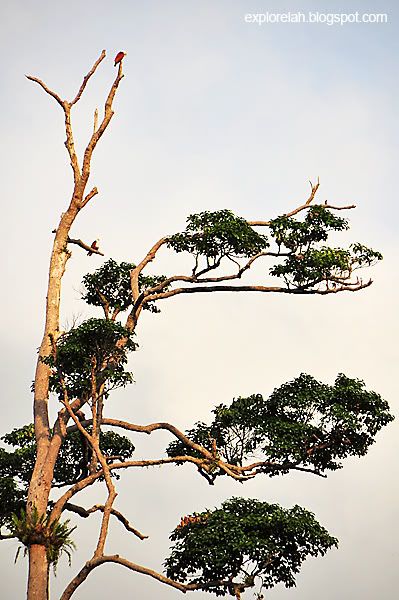 |
| The hornbills eluded us but we saw a couple of Brahminy Eagles perched on a tree top. Yo eagle, how's the view up there? :o) |
My envy of the view the eagles had was quickly satiated with our arrival on the roof of Langkawi. Standing at 881m, Gunung Raya is the tallest mountain and offers a superb panoramic view of the island.
Unfortunately, our visit met with thick fog and we could hardly see much. But the cooler temperature was a welcome from the tropical heat. I estimate that the drive up should take no more than 45 minutes without stops.
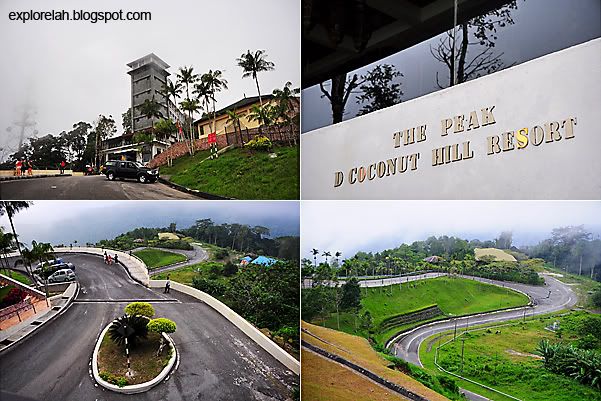 |
| At the top of Gunung Raya sits the D'Coconut Hill Resort which used to be a holiday villa of the Malaysian Prime Minister. It is now an exclusive mountaintop hotel that is an attraction in its own right. |
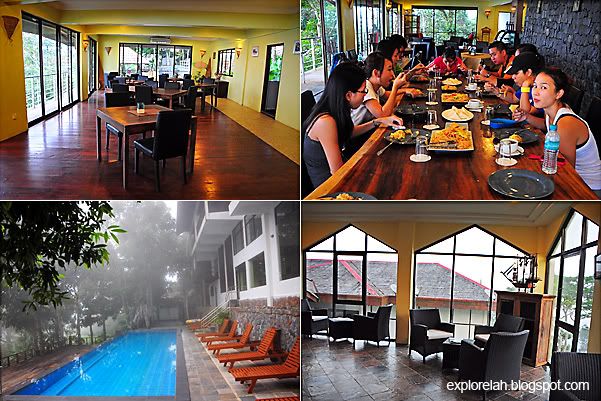 |
| Enjoying a cup of coffee or tea at the resort's contemporary cafe cum restaurant would let you get not just a caffeine fix but a high from the aerial view and crisp mountain air. |
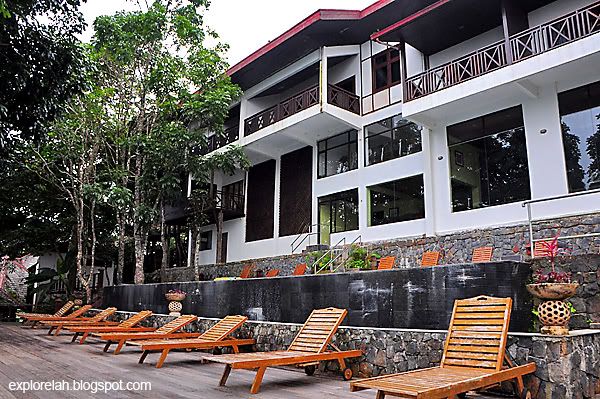 |
| Visage of one of the accomodation wings at the resort with a pool that looks through a forest canopy onto a breathtaking view of Langkawi's topography and the Andaman Sea. |
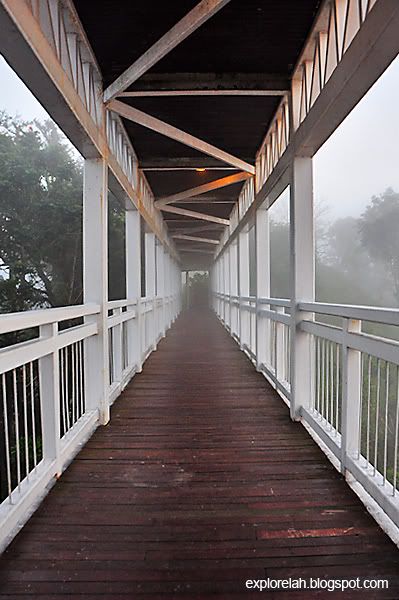 |
| If you're not here to stay, you can also pay RM10 to go atop the watchtower for an unobstructed bird's eye appreciation of the island. This is a walkway that leads to a lift at the tower. |
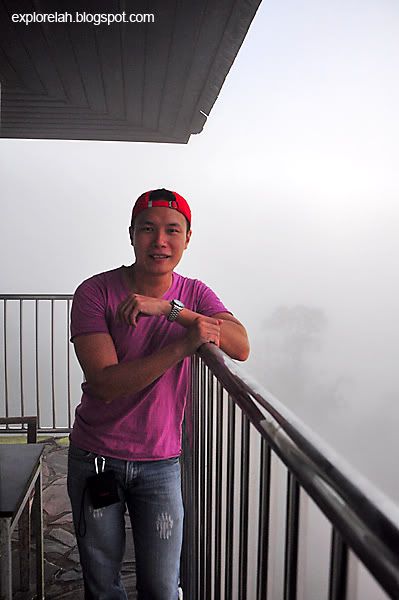 |
| Si mi mah kua boh (can't see anything) because Gaia had been smoking. But it's really cool up here and there's a small cafe. Having wine at this place would be divine! |
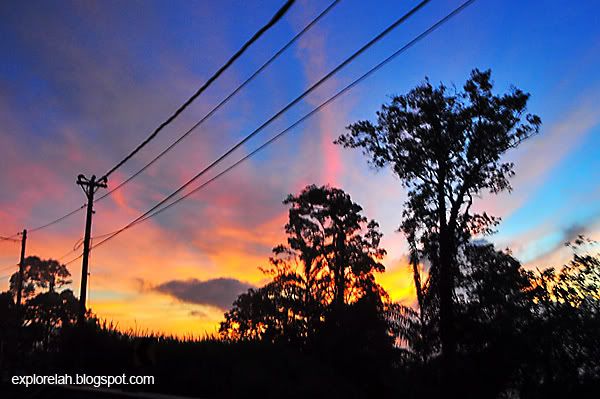 |
| By the time we left D'Coconut Hill Resort, the sky was already in the middle of its evening concerto. The symphony of azure, crimson and gold gets a standing ovation from my camera. |
Can't really see them clearly but Irshad made up for it with a very touching story. The hornbills mate for life and form lifelong bonds and there was a pair that Irshad had gotten to know. One day, a gunshot rang through the forest and the female collapsed to the ground. A man in a motorcycle sped away with it.
For the next one and a half year, the remaining male hornbill would fly to the very branch on which its mate was killed and called out to it. The male hornbill had since found a new mate but occasionally, it can still be seen at that tree spot.
So, do you want your relationship to be a hornbill, or chicken?
Hunt for the Controversial Colugo
After Gunung Raya, Irshad took us on a night excursion of the forest. So exciting! I've never explored the forest at night before. Our main purpose here was to look for the elusive Colugo who, get this, is our genetic relative!
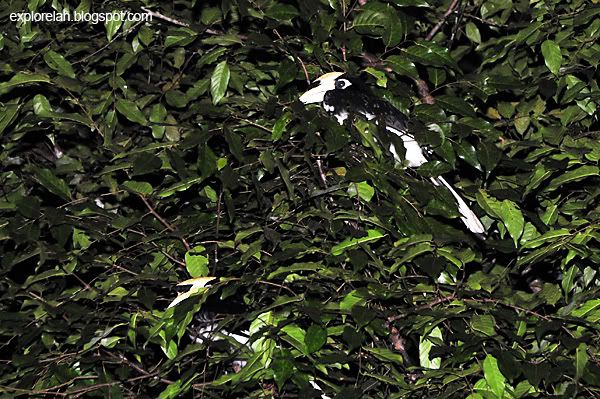 |
| Saw a pair of resting Oriental Pied Hornbills at pretty close range. Awesome! |
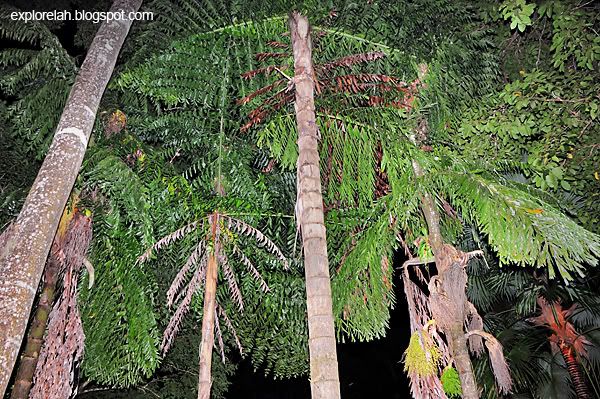 |
| There's something hidden in the trees. Look carefully, can you see what it is? |
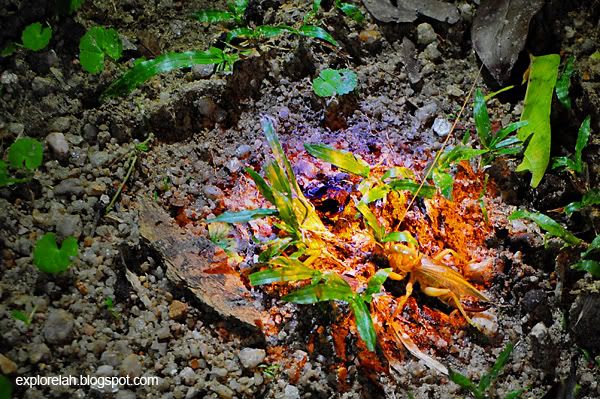 |
| Our night reverie was accompanied by cricket mating calls. Here, a female cricket was on its way to meet a date. The orangey spot was cast by a tungsten torch. |
We shone our torchlights into the trees hoping to catch an eye shine (tapetum lucidum effect) which will indicate a Colugo (pray it's not Potianak!) but to my unaccustomed eye, I saw nothing. But on the ground, I caught sight of a huge cricket, I mean a really BIG one hurrying across the forest floor. And Irshad promptly picked it up told us their story...
There are two types of male crickets - the noisy ones and quiet ones. A quiet cricket? Now, that's something new.The noisy crickets get more girlfriends but lead very short lives as they attract predators and a parasitic fly that lays eggs into their bodies. When the eggs hatch, they burst from the cricket's abdomen Alien-style.
The quiet ones would hang around the noisy ones and wait. When the loudmouths get busy with a mate, they stop cricketing but their calls would've attracted other females to come their way. At this point, the quiet ones let out a small whimper. Thinking that its the male they were after, the females mate with the cheaters.
The quiet male cricket may not get an orgy, but it gets to live very long. So what do we learn from the male crickets? Promiscuity kills ya faster!
From his glowing account of the medicinal benefits of this herb, I wanted to just get down on all fours and start munching on them! The plant has a long history as a traditional medicine in the Chinese, Indonesian, Vietnamese, Thai and Ayurvedic systems of healing which modern science is beginning to verify. A drug for cardiovascular diseases made from the active constituents of the Indian Pennywort may soon find its way into our Western pharmacies soon.
According to clinical studies, the herb is a mild adaptogen which has the ability to regulate stress and act as a sort of tonic for general health like ginseng, has anti-microbial efficacies, possesses anxiolytic properties (mild tranquilising effects helpful in combating anxiety disorders), and also an aphrodisiac! Plus it can stimulate collagen production so it is a great ally for age-defying skin. That's a green fountain of youth right beneath my feet!
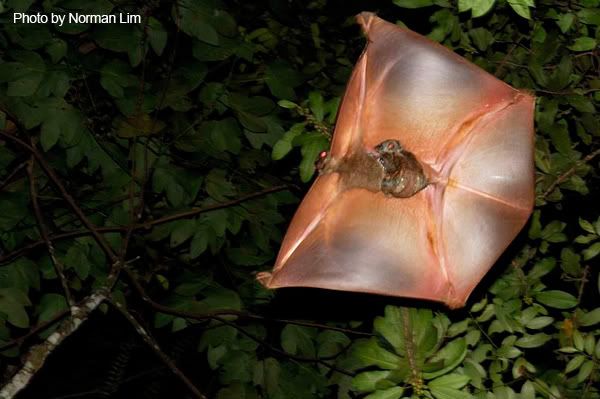 |
| Image of Colugo with young clinging to its body taken from Penn State Eberly College of Science archive. Gestation takes 60 days and the infants live with the parent for about six months. |
Nicknamed the Flying Lemur of Southeast Asia, the misnomer is far-fetched because the Colugo neither flies (it glides) nor is it a lemur. When it was first discovered, the nocturnal creature was classified under the order of the primates. Humans are in the primate order. But it was later classified under the order of the bats because it has skin for wings. Colugos are not flying squrriels or flying foxes.
But later DNA mapping found that it is closer to the primate genome. In other words, we humans are relatives with the Colugo! This animal has been classified into a new order own its own (Dermoptera) with two species - the Sunda Colugo and the Philippine Colugo. They can be found in Singapore too at Bukit Timah Nature Reserve, MacRitchie Reservoir and I believe other forested areas of our tiny red dot.
While I was disappointed at not having the opportunity to catch the Colugo with my own eyes, my eyes have been opened to a lot more about the romance, survival tactics and healing powers of nature. For a truly rewarding experience of Langkawi's wildlife, you can book tours with Jungle Walla where Irshad is the resident naturalist. It's totally worth it,.
Labels:
Chromolaena Odorata,
Colugo,
D'Coconut Hill Resort,
Eupatorium Odoratum,
Flying Lemur,
Gunung Raya,
Hornbills,
Irshad Mobarak,
Langkawi,
Malaysia,
Red Wattled Lapwing,
Siam Weed,
Sunda Flying Lemur
Subscribe to:
Posts (Atom)
